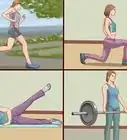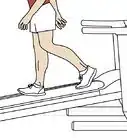This article was co-authored by Monica Morris. Monica Morris is an ACE (American Council on Exercise) Certified Personal Trainer based in the San Francisco Bay Area. With over 15 years of fitness training experience, Monica started her own physical training practice and gained her ACE Certification in 2017. Her workouts emphasize proper warm-ups, cool-downs, and stretching techniques.
wikiHow marks an article as reader-approved once it receives enough positive feedback. This article received 12 testimonials and 89% of readers who voted found it helpful, earning it our reader-approved status.
This article has been viewed 869,701 times.
Leg muscles can be tough to build up, because they're already so strong from daily use. To get bigger leg muscles you have to take your training to the next level and push your legs like never before. Using the right training techniques and eating plenty of protein will pay off in the end. Genetics do play a role in how big your leg muscles will ultimately become, but anyone can benefit from the right exercise routine.
Steps
Training to Build Muscle
-
1Train at least 3 times a week. Many people think that to build muscle you have to train every day, but that's not the case. Muscles get bigger when they get small "breaks" in training, and get stronger when they build up again during REST days. So don't exercise the same muscle groups two consecutive days. Rotate muscle groups so you're training your arms, back, chest, and other areas on the days you aren't working out your legs.
- Making sure to work out your other muscle groups is important when you're working on your legs. Don't neglect the rest of your body!
EXPERT TIPMichele Dolan is a BCRPA certified Personal Trainer in British Columbia. She has been a personal trainer and fitness instructor since 2002.Certified Fitness Trainer
 Michele Dolan
Michele Dolan
Certified Fitness TrainerMichele Dolan, a certified personal trainer, advises: "Exercise your legs for at least 30 minutes 3-5 times per week. You can run, climb, cycle, ski, skate, or do gym-style exercises like lunges and squats."
-
2Work out hard. Make your leg workouts count. They shouldn't last more than 30 minutes, but those 30 minutes shouldn't feel comfortable. You want to go all in and maximize the workout, putting a lot of pressure on your muscles so that they break down and build back up stronger.
- For each exercise, you should use an amount of weight that you can lift for about 10 reps before you have to stop. If you can lift an amount of weight 15 times without stopping, you aren't lifting enough. If you can't lift it more than 5 times without needing a break, you're doing too much.
- Some trainers recommend "training to failure," which is the practice of repeating an exercise until you can't do even one more rep. This is said to build up the muscles more quickly, but it can cause injury if done incorrectly. Work with a trainer to figure out which technique is right for you.
Advertisement -
3Practice explosive reps. Many bodybuilders train with "explosive" movement, but this can cause injury if you push yourself too hard or use the wrong technique. If you're interested in these quick, forceful motions, take the time to learn them correctly:
- Start with a lighter than usual weight.
- Always use a slow, controlled release on the eccentric (the lowering or lengthening part of the exercise).
- Pause and contract the muscles at the low point of the exercise.
- Explode into the lift or push. Start with a short range of motion and increase the distance gradually as you train.
- Keep your joints slightly bent at peak range of motion to prevent damage to connective tissues.
-
4Get plenty of rest between workouts. Muscles get stronger during the time between workouts, when the fibers heal and strengthen. That's why it's mandatory to get plenty of sleep every night when you're training heavily. On the days when you don't work out, let yourself rest. Don't go on a 10-mile hike or bike all day long - it's okay to put your feet up and relax.EXPERT TIPMonica Morris is an ACE (American Council on Exercise) Certified Personal Trainer based in the San Francisco Bay Area. With over 15 years of fitness training experience, Monica started her own physical training practice and gained her ACE Certification in 2017. Her workouts emphasize proper warm-ups, cool-downs, and stretching techniques.ACE Certified Personal Trainer

 Monica Morris
Monica Morris
ACE Certified Personal TrainerOur Expert Agrees: Develop a plan where you split your lower half routine into two days a week. On one of the days, focus on your glutes and your hamstrings, then give your body 48-72 hours to rest, depending on how sore you are. Once that soreness has abated, have your second lower-half day for that week, where you focus on your quads and calves.
-
5Prioritize weights over cardio. Cardio promotes long, lean muscles instead of bulky ones. However, it takes many hours of running to undermine a heavy weight training routine, and 150 minutes of moderate cardio every week is still important for good health. If you are serious about bulking up your legs, get your cardio in by swimming or by using a rowing machine. You can limit cardio to 30 minute sessions after your resistance training, but do not skip cardio completely.
Weight Training Exercises
-
1Practice with light weights first. Using the wrong form or overexerting yourself can cause knee injury, spinal compression, and back injury. Always practice the proper technique for each exercise with light weights first. Move on to a more challenging weight only when you have perfected the proper form.
-
2Work out your thighs with barbell squats. This is a great exercise for building up those thighs. You'll need a barbell bearing as much weight as you can lift 8-10 times without needing to put it down. Hold the barbell with both hands over your shoulders. (You can use dumbbells instead if you'd like).
- Start with your feet shoulder-width apart.
- Bend your knees and squat, moving your butt toward the ground. Keep squatting until your thighs are parallel to the floor. Keep your shins vertical and your knees aligned vertically above your feet.
- Push back up and repeat 10-12 times for 3 sets.
-
3Do stiff-legged deadlifts. This works your hamstrings, making them bigger over time. Load a barbell with as much weight as you can lift for 10 reps, and set it in front of you on the ground. [1]
- Stand with your feet shoulder width apart.
- Bend at the waist, keeping your back straight and your knees at a slight bend. Grab the barbell with both hands.
- Keeping your knees at a slight bend, lift the barbell so that it rests against your thighs, then lower it back to the floor.
- Repeat 10-12 times for 3 sets.
- Warning: locking your knees during this lift greatly increases the risk of injury, even for advanced lifters. Only the most extreme body builders use this technique after years of training.
-
4You can build most of the leg at once. Stand within arm's reach of a wall and try the following exercise:
- Lift one of your legs and bend it. Keep your right hand on the wall for support.
- Now stand on the toes of your left leg. Keep your body straight.
- Now bend your leg as if you are going to take a high jump.
- Even when you bend your leg, stand on your toes.
- Now lift your body with that leg with moderate speed.
- During this entire cycle, stand on your toes and of course on only one leg.
- Repeat this for 10 times or even 20 times if you are strong enough. Repeat the same with another leg.
- Keep increasing the number of times you lift your body as your legs get stronger.
- This is hard at the beginning, but you will get used to it.
- This strengthens your calf muscles as well as the upper leg and gluteals.
-
5Do calf raises. This exercise pinpoints your calves, which are notoriously hard to buff up. Hold a barbell or dumbbells over your shoulders. Stand with your feet shoulder-width apart. Raise up on your toes, then set your heels back down on the ground. Repeat 10-12 times for 3 sets.[2]
- Single leg calf raises are even more effective than using weight, and help work the stabilizing muscles in the ankle.
-
6Build inner thigh muscles with sumo squats. This exercise targets your inner thigh and gluteals:
- Stand in a wide stance with your feet turned outward at a 45º angle.
- Hold a kettlebell in front of you with both hands.
- Slowly bend into a squat, keeping your back straight and your knees over your toes.
- Squat as low as you can comfortably get, then return.
- Repeat 10 to 12 times for 3 sets.
Eating to Build Muscle
-
1Eat high-calorie meals. To get bigger muscles, you need extra fuel. The calories you consume, however, should not come from fast food and junk food - eating too much of those will just slow you down. Eat plenty of calories from healthy, whole foods to keep your body feeling powerful.
- Eat lean meats, fish, eggs, and dairy.
- Nuts, avocados, and whole grains are also great.
- Eat tons of fruits and vegetables.
- Choose healthy fats provided by seed and nut oils, coconut oil, and olive oil. Minimize the trans fats and animal fats found in processed and fried foods.
-
2Get lots of protein. The body uses protein to build muscles, so you'll need extra during this time. Eat beef, pork, chicken, fish, eggs, and cheese. Eat beans, legumes, and tofu for non-animal protein sources. If you are struggling to get enough protein in your diet, try protein shakes or drink more milk.
- You can try supplements such as creatine. Studies show that creatine supplements can safely help build up the muscles when taken with daily meals.
-
3Drink plenty of water. Your body will need more water than usual to stay hydrated when you're training heavily. Water also helps flush toxins from the body and is essential for healthy digestion. Aim to drink at least 10 8-ounce glasses of water every day while you're training.
How Do I Build Bigger Calves?
Sample Exercises and Routines
Expert Q&A
Did you know you can get expert answers for this article?
Unlock expert answers by supporting wikiHow
-
QuestionWill doing sit ups increase the size of my thigh muscles?
 Michele DolanMichele Dolan is a BCRPA certified Personal Trainer in British Columbia. She has been a personal trainer and fitness instructor since 2002.
Michele DolanMichele Dolan is a BCRPA certified Personal Trainer in British Columbia. She has been a personal trainer and fitness instructor since 2002.
Certified Fitness Trainer
-
QuestionHow do I build thigh muscle after having ACL surgery?
 Michele DolanMichele Dolan is a BCRPA certified Personal Trainer in British Columbia. She has been a personal trainer and fitness instructor since 2002.
Michele DolanMichele Dolan is a BCRPA certified Personal Trainer in British Columbia. She has been a personal trainer and fitness instructor since 2002.
Certified Fitness Trainer Slowly. Patience is crucial. Start with very light weight or just the weight of your own leg. Try 8-15 repetitions per exercise. Very slowly and gradually increase your number of reps over the course of the first 4 to 8 weeks of training. After that, if all is well, consider increasing the reps and sets for another month. If all goes well after that, you can start increasing the weight in very small increments, always giving your body a week to adapt to weight increases before increasing the weight further. Use perfect technique or you risk re-injury.
Slowly. Patience is crucial. Start with very light weight or just the weight of your own leg. Try 8-15 repetitions per exercise. Very slowly and gradually increase your number of reps over the course of the first 4 to 8 weeks of training. After that, if all is well, consider increasing the reps and sets for another month. If all goes well after that, you can start increasing the weight in very small increments, always giving your body a week to adapt to weight increases before increasing the weight further. Use perfect technique or you risk re-injury. -
QuestionWhat exercises make your legs stronger?
 Michele DolanMichele Dolan is a BCRPA certified Personal Trainer in British Columbia. She has been a personal trainer and fitness instructor since 2002.
Michele DolanMichele Dolan is a BCRPA certified Personal Trainer in British Columbia. She has been a personal trainer and fitness instructor since 2002.
Certified Fitness Trainer
Warnings
- Obtain your doctor's approval if there is any question concerning your ability to exercise with your present fitness level and overall health level.⧼thumbs_response⧽
References
About This Article
To build leg muscles, exercise 2-3 times a week for 30 minutes at a time, with at least 1 day of rest between workouts. When you work out, focus on weight training, and do deadlifts, squats, and calf raises to build your leg muscles. Outside the gym, eat healthy, high-calorie meals to fuel your workouts. You should also eat extra protein, which the body uses to build muscle, by adding more foods like beef, pork, eggs, and beans to your diet. For more from our reviewer on how to build leg muscles, including by doing "explosive" reps, read on!
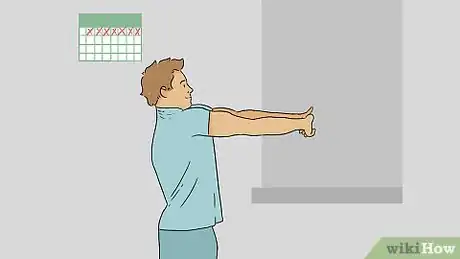
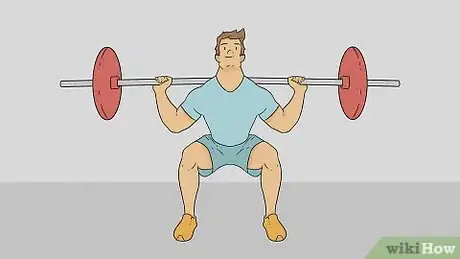

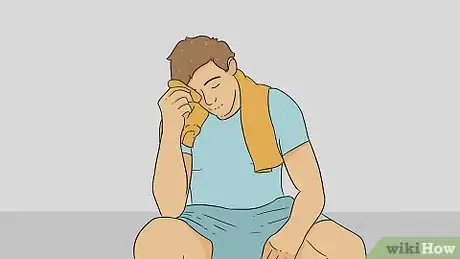
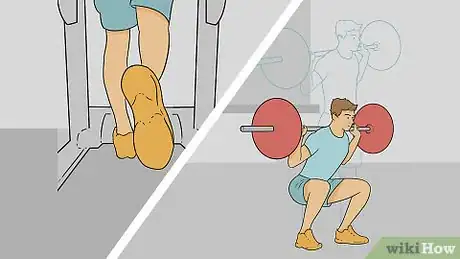

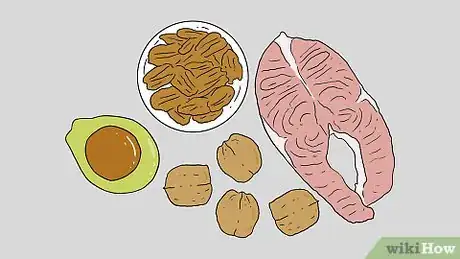
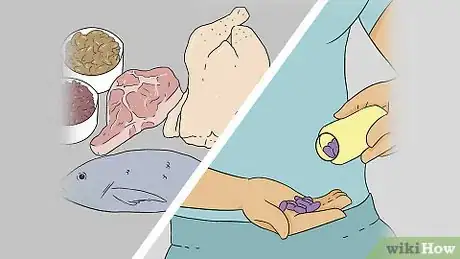
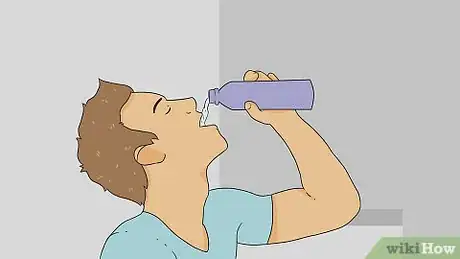

_sample.webp)
_sample.webp)
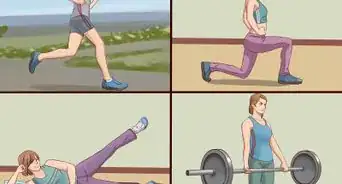

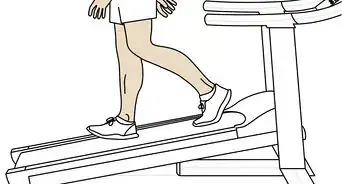


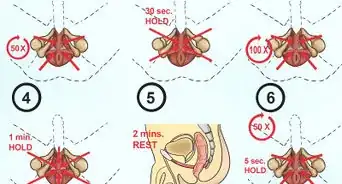


-Step-24.webp)











